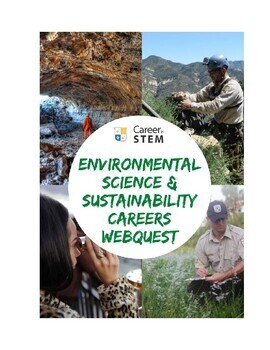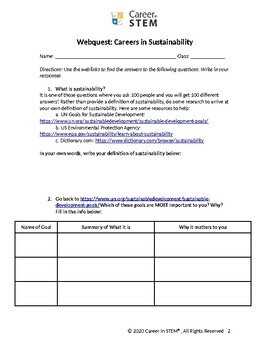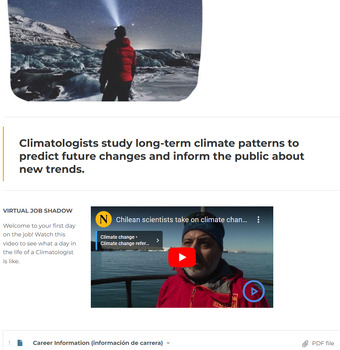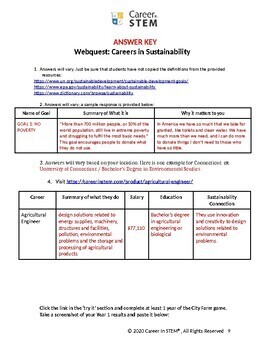Environmental Science and Sustainability Careers Webquest (Earth Day STEM)
- Word Document File
- Internet Activities
- Webquests
Also included in
- Who doesn't love a good webquest?! This bundle includes all items in our very popular STEM career webquest series - animal careers webquest, computer science careers webquest, engineering careers webquest, and more! Each webquest includes access to premium STEM career exploration resources includingPrice $88.90Original Price $96.07Save $7.17
- A solid understanding of Environmental Science is critical for our next generation of leaders and innovators. Combine scientific understanding with career exploration in this Environmental Science STEM Lessons and Career Exploration Bundle! A good mix of in person and distance learning resources incPrice $30.95Original Price $40.46Save $9.51
Description
Explore a wide variety of STEM careers in environmental science, from remote sensing specialist to forester with this inquiry-based Environmental STEM Career Exploration webquest! Students will use fun digital resources to identify key career information (salary, education, etc.), and will make sustainability connections for each career through career-focused games and web-based activities. This webquest includes 20 multi-step questions (table fill-ins and short answer) about careers in environmental science. Appropriate for middle and high school students, taking 90 minutes to complete. Purchase includes:
1. Student webquest in editable WORD document and GoogleDoc format
- 20 questions (table fill-ins and short answer), 17 pages
2. Unlimited lifetime access to 14 environmental science online career profiles, each with virtual job shadow youtube video, career information sheet in English and Spanish, and career focused 'try it' activity [use these career pages throughout the year to help students KEEP exploring - extreme lifetime value!]
3. Comprehensive answer key for teachers.
Supports NGSS.MS-LS2-4 and NGSS.HS-ESS3-1.
More Earth & Environmental Science STEM Career Exploration Resources
- Seasons Lesson & Career Exploration
- Water Pollution STEM Challenge
- Intro to Ecology STEM Challenge
- Resource Availability Project
- Fish & Game Warden Game and Project
- Environmental Careers Poster
- Sustainability STEM Challenge
- and many more earth & environmental science STEM activities!
Want valuable download & go resources to help you effortlessly integrate STEM career exploration? Then get a copy of my FREE Quick Start STEM Career Exploration Kit!







